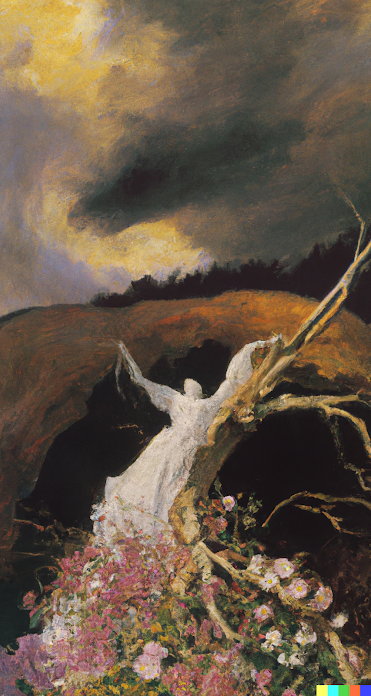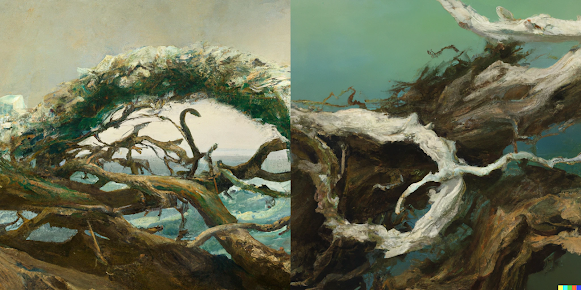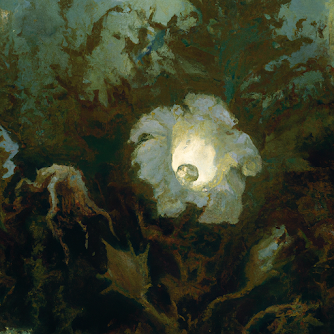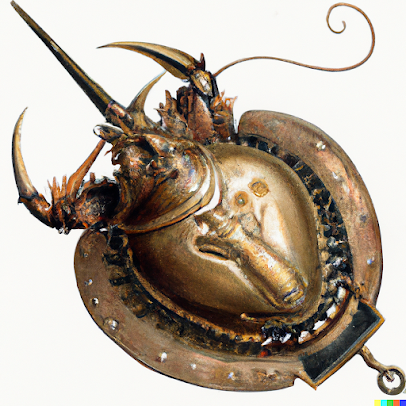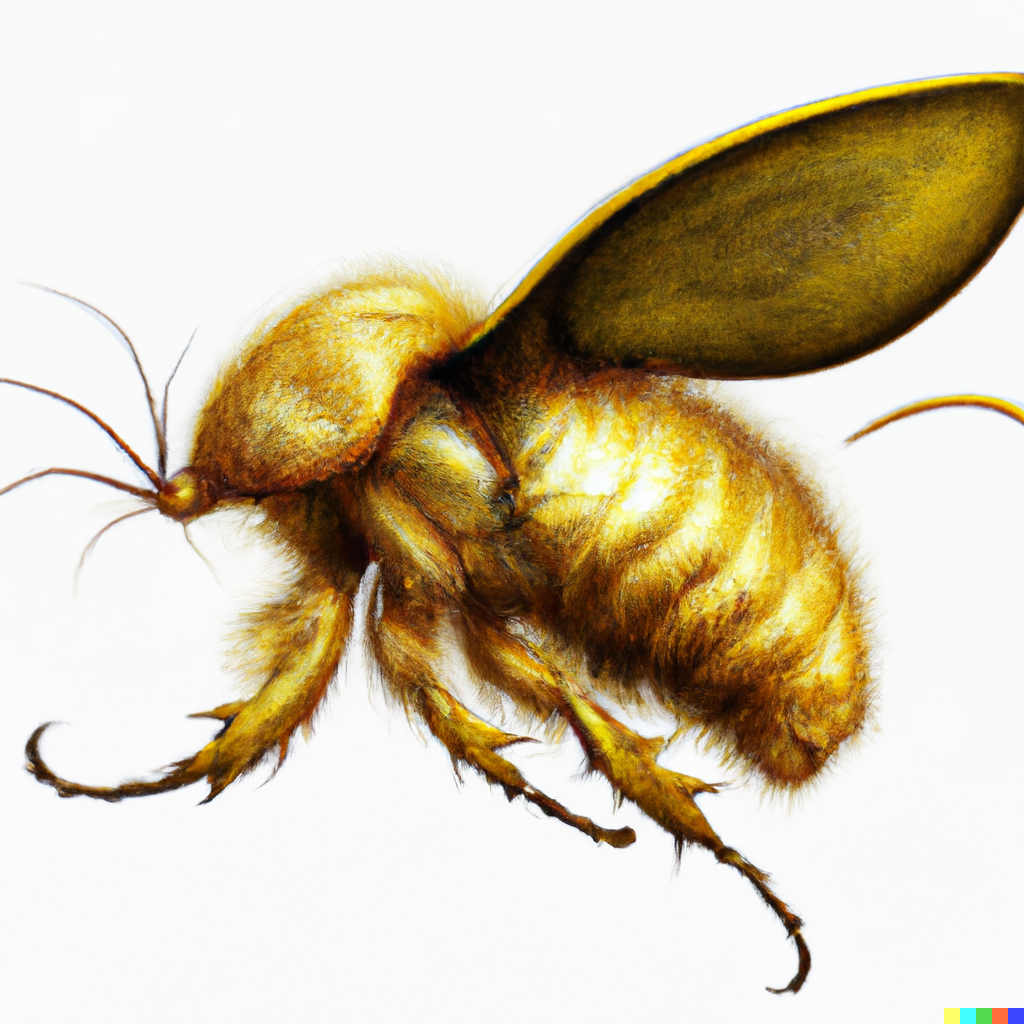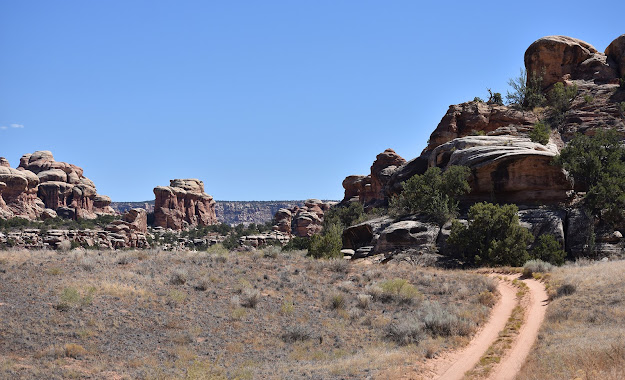As someone deeply interested in landscapes and their construction/synthesis/traces in our memories, DALL-E 2 has sucked away a lot of my weekend. The 'generation frame' feature is what truly makes it into a compelling image creation process-- the interactions between prompter and final image are pretty rich because of this ability to extend and revise any particular part of the image easily! Fun stuff. And for the record... it makes me want to paint more, not less! It's kind of like technology that lets you remix art history to be whatever you want, but you have one hand on a steering wheel of a boat that is very much doing its own thing with regard to every other control.
The prompt that has generated several of my favorite results (and always different! It's very impressive, since I leave colors and everything up to the AI in this example): "John Singer Sargent painting of a dead tree merging with a body erupting in flowers".
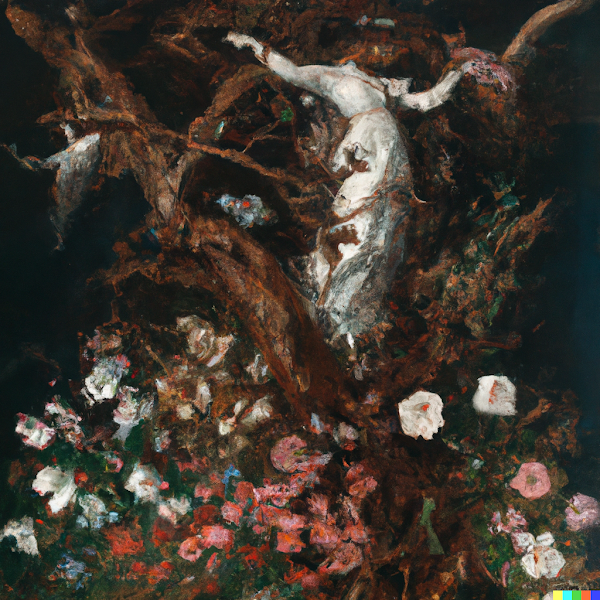
And so immediately what you can see is that this kind of technology exists as a compliment to real artists as much as to itself-- this tech has made me appreciate just how good Sargent was at making appealing painterly images, since far more than any other artist I've used in prompts, it returns interesting results.
Going from one of the early generations from this prompt, and this is what I am doing now with this tech primarily-- I add generation frames that the AI can connect seamlessly (more or less) to the first image in any position I want, with NEW prompts, which is key. It means that the results become exponentially more personal and the prompter exerts infinitely more authorship over the final image. So for the white clothed figure I added a frame with prompts like "John Singer Sargent painting of bundles of white cloth stretched into a faint blue sky"-- basically, once you have a starting image you like you can get more specific with the prompts to 'complete' the image in any way you like, often following an iterative process to get satisfactory results, and sometimes erasing just little bits of the image that don't hold up to generate something new.
So for the white clothed figure I added a frame with prompts like "John Singer Sargent painting of bundles of white cloth stretched into a faint blue sky"-- basically, once you have a starting image you like you can get more specific with the prompts to 'complete' the image in any way you like, often following an iterative process to get satisfactory results, and sometimes erasing just little bits of the image that don't hold up to generate something new.
Another example, starting with the same prompt for the first part of the image but using different prompts for the additional frames. In this case, it was something about a soft purple cosmic foggy nightscape with the milky way, as you can imagine.
Another example, using again a unique prompt for the upper landscape.
Initial prompt image roughly second from left side, "John Singer Sargent painting of a fallen dead tree in a desert with a brilliant brooding red sunset". But this one is an example where I used several different prompts for each part of the image to expand it in my own way with my own intentions, thinking about how I wanted the sky and ground to look. On the left hand side image I told it to add a few scattered bones, on the right hand side a 'desolate wasteland hill'.
Two examples of "John Singer Sargent painting of curved sensuous driftwood covered in barnacles and light green lichen in the middle of an ocean, with all of the driftwood contained in the image". Note that my wish to have everything inside the frame even explicitly is not understood by the AI. But often this is for the better-- it has all the history of all the paintings fed into it giving it composing power.
I have of course tried many things without using Sargent's name, it's just too tempting to come back to when I want 'painterly'.


